Religion, Superstition, and Cosmos
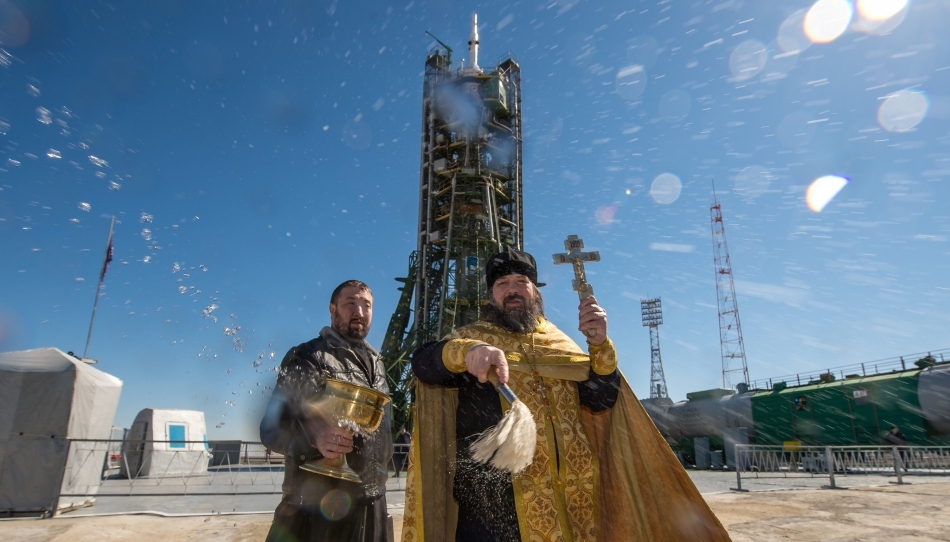
Regularly in discussions of domestic space news, the same jokes about the firmament appear, demotivators and irony about the consecration of launch vehicles that have been imposed on their teeth. There is a feeling that there is a myth in the head of a very large number of people that previously pure atheists were moving the space program, and now people are running wild and began to drag various religious prejudices into space. Alas, this is not at all the case - religion and superstition have long since been leaked into space exploration.
Small disclaimer
Since I will be talking about things that are not very pleasant for atheists, for the beginning it will be necessary to refute suspicions of a secret religious sermon. I have been an atheist for eight years now, and if desired, I can even be called an anticlerical.
In 2012, I was the one who wrote a letter to the Baikonur Prosecutor’s Office asking about whose money the rockets were blessed for.
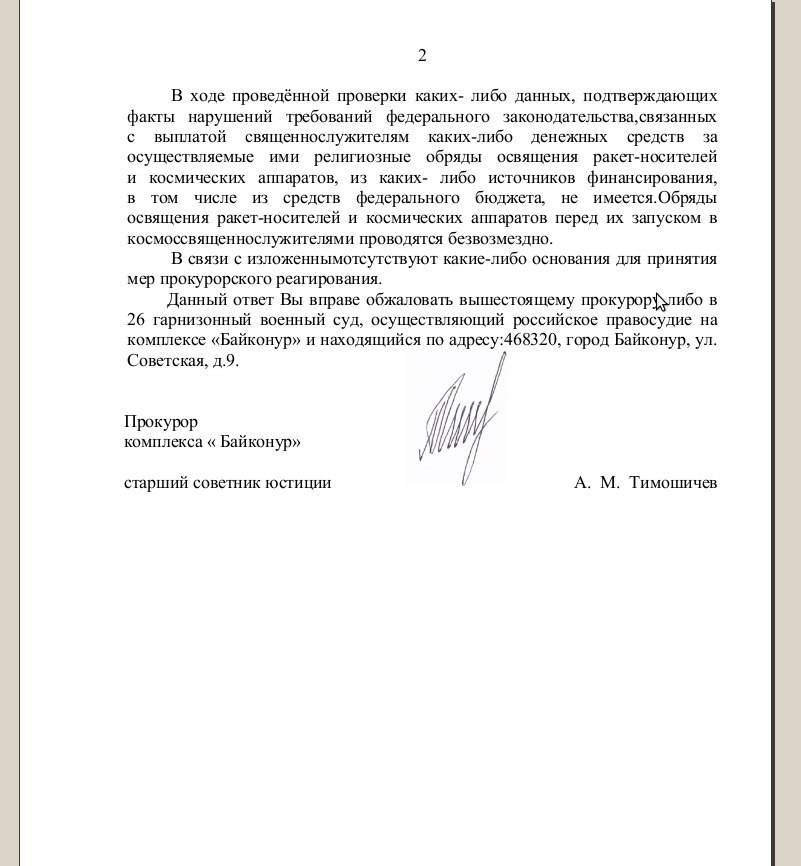


In the same publication, I want to tell about the true history of astronautics and to raise a bit the question of what to do in such conditions.
Religion
The USSR was officially an atheistic country, so we will not see any official religious rites or statements in the history of Soviet cosmonautics. There are many speculations about the religiosity of individuals, but in the absence of reliable facts to confirm or dispel them will not work. At the same time, in parallel with the Soviet Union, the United States mastered space, which at the time was a much more clerical state than it is now. For example, compulsory prayers in schools were abolished only in 1963.
The first widely known prayer delivered before the launch of the rocket was the so-called Alan Shepard's Prayer. Preparing for the first American manned suborbital flight on May 5, 1961, Alan uttered the historical phrase “Dear Lord, don’t let me fuck up”. Negotiations at this stage before the start were not broadcast on the air, so the phrase did not become known immediately, but the abundance of sources does not doubt its authenticity.
')
The first manned orbital flight was broadcast live, and there was more religion there. Engineer Thomas Joseph O'Malley (TJ O'Malley), pressing the button that starts the rocket launch process, crossed himself and said, “God bless you on the way” (“Good Lord ride all the way”). “With God!” (“Godspeed, John Glenn!”), The double astronaut Scott Carpenter responded and proceeded to count down ten seconds before the start:
Astronaut Gordon Cooper, who made the last flight of the “Mercury” program, previously wrote and, on the 14th orbit, read a special prayer for recording on the on-board recorder. I will quote it almost completely, it has a rather unusual, slightly funny and strange text:
“Help us successfully complete this flight. Help us in our future space affairs so that we can show the world that democracy can compete and still do everything right, can conduct research and development, and can conduct various scientific and high-tech programs in a completely peaceful environment. Stay with our families, direct them and inspire and let them know that everything will be okay. We hope in your name. Amen".
The first flight to the moon, too, did not go without a clerical episode. The Apollo 8 astronauts on Christmas Eve read Genesis live from the lunar orbit:
Transmission from the lunar orbit saw all of America. Activist Madeleine Murray O'Hair (Madalyn Murray O'Hair), who in 1963 through the US Supreme Court secured the abolition of compulsory prayers in schools, went to court about this as well. The court refused to accept the statement, believing that this did not apply to its jurisdiction, but the scandal in society rose considerable, and subsequent religious actions did not go live, or the astronauts changed something so that they could not formally find fault with them.
During the first landing of mankind on the moon, the deist (or even an atheist) Armstrong and the Protestant Aldrin were in the landing module. And, immediately after landing, live, Aldrin, saying formally neutral words
This is the pilot of the lunar module. I would like to use this opportunity to ask everyone who listens to me, whoever and wherever he is, to stop for a moment, think about the events of the past few hours and give thanks ...
He served the Eucharist (in the Protestant rite it could be reduced to a few minutes) and consumed the bread and wine brought with him. The bowl returned with the crew to Earth and is still used in the Webster Presbyterian Church at the memorial service on Sunday closest to July 20. And Aldrin himself in his memoirs “Magnificent Desolation” writes that if he had the opportunity to replay the Apollo 11 moon flight, it is not a fact that he would repeat this action. Astronauts came to the moon on behalf of all mankind, of all religions, but at that moment Aldrin could not come up with actions that would better express the uniqueness of the flight. Buzz wanted to express hope, gratitude and the universality of the search, and found nothing better than the Liturgy (“common cause”) and the Eucharist (“gratitude”).

The same bowl
The Apollo 15 astronauts named four craters near the landing site of Luke, Mark, Matthew and Index (consonant with the fourth John the Evangelist). The fourth name was then approved by the International Astronomical Union, and the crater is now officially called that.
The astronauts themselves were distinguished by a variety of beliefs. John Glenn, Buzz Aldrin and Jim Lowell are the elders of the Presbyterian Church. Of the first seven astronauts, the most likely minimally religious was Alan Shepard. Gordon Cooper passionately believed in aliens and tried to uncover a government conspiracy to hide their existence and the contacts of special services and senior government officials with aliens. There are disputes over whether Neil Armstrong was a deist (he wrote this in one questionnaire) or an atheist. And, for example, the Apollo 15 astronaut James Irwin after his resignation became a preacher and for many years he missionary under the motto “Jesus’s coming to Earth is more important than landing a man on the moon.”
The only conclusion that can be drawn from all this is that religious beliefs (or their absence) did not prevent astronauts from doing their job well.
Superstitions
The formally declared 100% atheism in the Soviet Union, alas, had a very mediocre relation to reality. With what, besides religions, should an atheist fight? With superstitions, omens and other prejudices. And, alas, the abundance of facts says that a variety of superstitions in the national cosmonautics flourished. After many years, some superstitions have become traditions, which, nevertheless, does not cancel the initially irrational reasons for their appearance.
Titan of the Soviet cosmonautics, Sergey Pavlovich Korolev, was not distinguished by absolute atheistic purity of actions. Many sources write that he did not allow assigning launches for Mondays, did not like the appearance of women on the launch pad (and forbade one engineer to appear there, during which some trouble occurred), believed in the “light hand” of Captain Smirnitsky.
From Korolev's immediate comrades, it is reliably known that Boris Chertok and Leonid Voskresensky were atheists. In Chertok's “Rocket and People” memoirs, there is a very funny moment when, celebrating Titov’s successful flight in the Kremlin, Voskresensky, seeing Rauschenbach talking to the heads of three religious confessions, suggested, according to Ostap Bender’s experience, “There is no God!” And “Religion is opium for of the people! Vigilant wives cut off the idea. And Chertok himself, being at the table opposite the rabbi and the mufti, raised a toast to the fact that Titov had not seen any God in space for a day.
Modern manned launches are surrounded by traditions and rituals that have grown out of superstition. Traditions before the start of the White Sun of the Desert are well known, sign on the hotel’s doors, exit the building under the Earth in the Illuminator, urinate on the bus wheel (pre-tested tightness of spacesuits is lost, and it has to be repeated). And women-cosmonauts, according to rumors, carry with them in a bus a bottle of urine to water the wheel and perform the ritual.
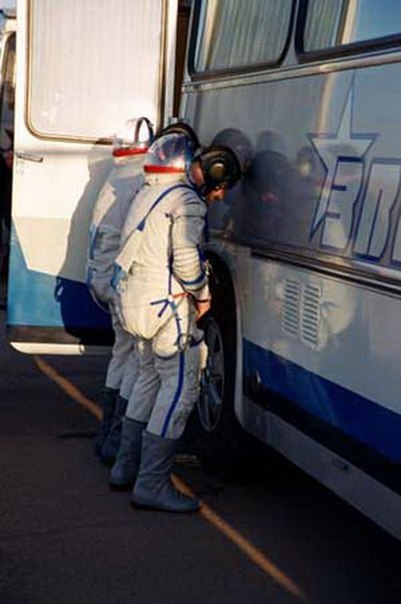
For many years in the ship itself there has been a mascot hybrid, psychological support and a useful device - a soft toy that pleases people and serves as a kind of "indicator of weightlessness."
And aviation superstitions leaked into the space program, there they also like to say “extreme” instead of “last”.
After the “Soyuz-1” disasters (call sign “Ruby”) and “Soyuz-11” (call sign “Yantar”), the call signs with the names of precious stones were banned for a very long time. Also, after cosmonaut Vitaly Zholobov’s early return from orbit, a mustache was banned. But these superstitions have already become extinct, now the crew of the Soyuz TMA-19M with the call sign Agat is in orbit, and in recent years the Space Station crew has been to the ISS quite a lot.
In 2006, Roscosmos TV even made a film about traditions and superstitions:
In unmanned launches also lack of superstition. At the Plesetsk cosmodrome on the frost covering the rocket, surely they write “Tanya”. Naturally, there is a mythology, they say, once they did not write, and the rocket did not fly away. At the Kapustin Yar test site, a matchbox is still placed on the console, on which the date of the last successful launch is written.
Superstitions have not bypassed the Americans. Here is a Ciuriositi bank with peanuts prepared for landing:
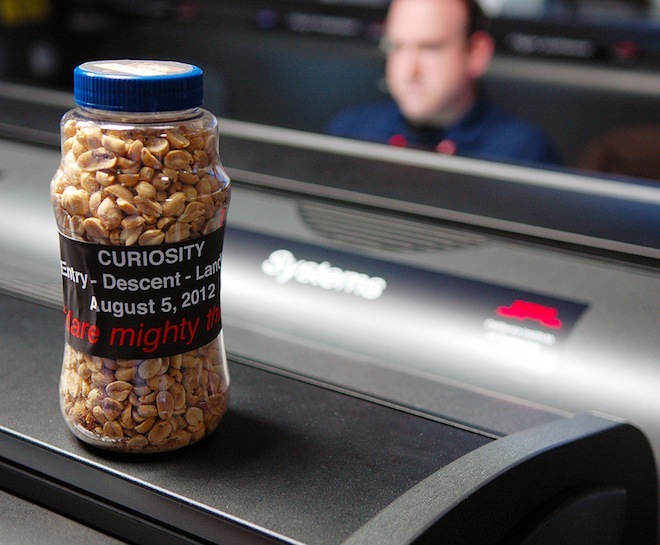
This superstition comes from the Ranger program (photographing the visible side of the Moon from an ever smaller height) when the first launches were unsuccessful. At the next launch, someone brought peanuts, the station worked successfully, and now the peanuts are “lucky” eaten at the MCC before the start of the main mission of the spacecraft. In the American manned program, there was a traditional meal, a tradition to play cards before the start, a tradition to wake the crew with music, and much more. But it’s very sad to see how the astronauts of the STS-107 mission (the Columbia shuttle that collapsed and burned in the atmosphere) go to the door jamb “for good luck” as they depart for the flight from which they will not return.
Speaking about the current state of affairs with religion on the ISS, it is impossible not to mention the theme of icons at the station. As the apotheosis of the clericalization of the ISS, this photograph was submitted
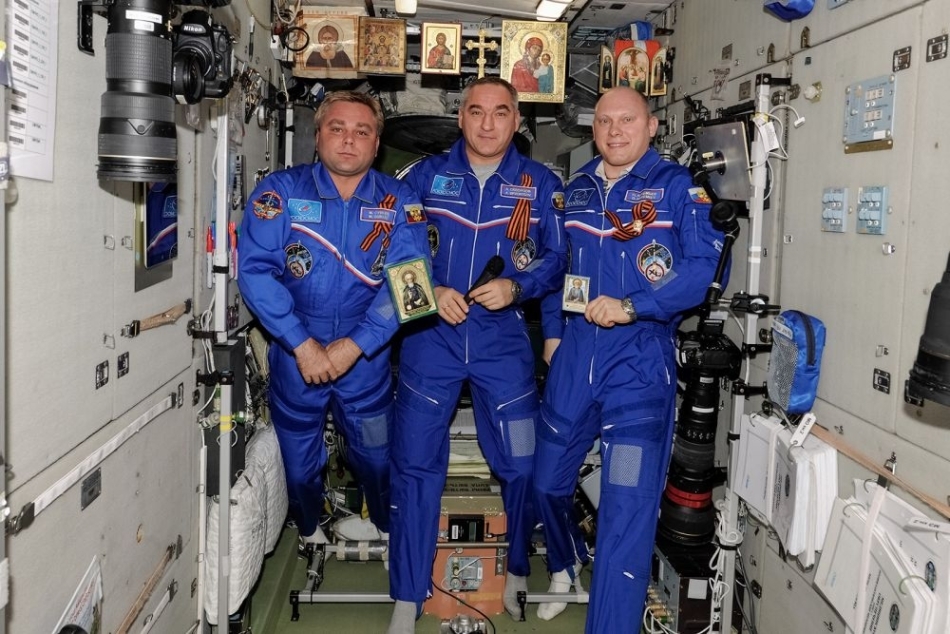
In fact, this photograph is from the recording of greetings on the 700th anniversary of Sergius of Radonezh (his icons are visible at the microphone). Astronauts participate in PR activity and regularly write appeals to various holidays and events. From the history of Russia Sergius of Radonezh will not work out, yes, probably, it would be wrong. Naturally, for such treatment they brought and placed all the icons that at that moment were on the ISS. In everyday life, icons are much less common. Here, for example, one of the most recent reviews of the ISS from Mikhail Kornienko in the “Year in Orbit” movie series
In the service module “Star”, where most of the appeals are recorded, there are now photos of Tsiolkovsky, Gagarin and Korolev. Above, by no means always getting into the frame, a cross hangs, it has been in orbit for more than ten years. In general, if you look at the photo change history from the place where video appeals are most often made from, the feeling is created that the crew places objects as they wish - there may be mission emblems, country flags, photographs, ship models, icons. And if you carefully watched the movie above, you noticed that in Mikhail Kornienko’s cabin there is a small icon that relates to his personal belongings.
One of the most recent photos. April 12, the same wall with photos and astronaut Tim Kopra
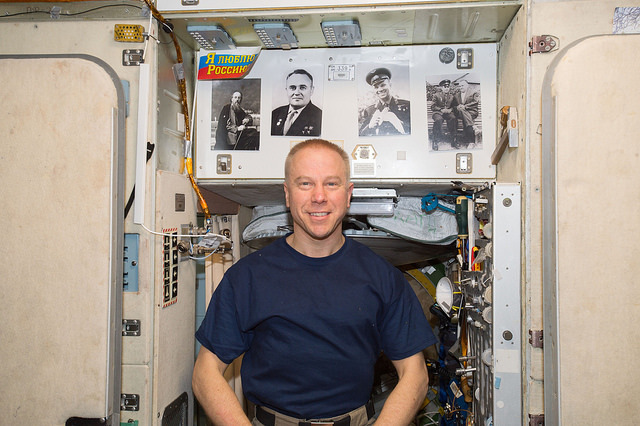
What to do?
I do not know, fortunately or unfortunately, but people of different religious convictions successfully mastered the cosmos, the only significant factor was their professionalism. The astronaut Chris Hadfield’s book, Astronaut Life Guide on Earth, states that seeing the cosmos only confirms religious beliefs that already exist in humans, and I tend to agree with this, drawing on personal experience. Both an atheist and a believer can show cosmic beauty to people, and both of them will find confirmation of their views. Seriously, for example, a creationist astro club of Seventh Day Adventists has been working in Kiev for many years. It holds evenings of paving astronomy (interestingly, do local atheists have a comparable answer?). At the same time, the study of space, like other scientific achievements, has already made it impossible to literally understand the holy books. Galileo's observations of Jupiter’s satellites struck the doctrine that the sun revolves around the earth. Exoplanets discovered in recent years are rapidly converting the Solar System from the unique to the ordinary, which also inevitably affects religious anthropocentrism.
For myself, I found the answer to what to do - the popularization of science, in my opinion, is bringing the era of the victorious Mind closer. It is hoped that after reading this material, atheistic network activists will choose more effective ways of enlightenment than myths about the history of astronautics and unfunny jokes imposed on their teeth.
On the tag "acute space issues" similar materials - women and space, sex in space.
Source: https://habr.com/ru/post/393517/
All Articles